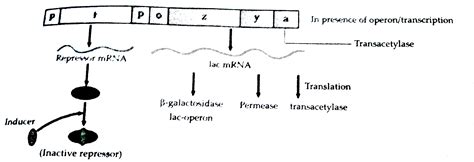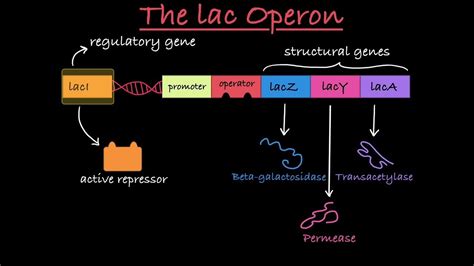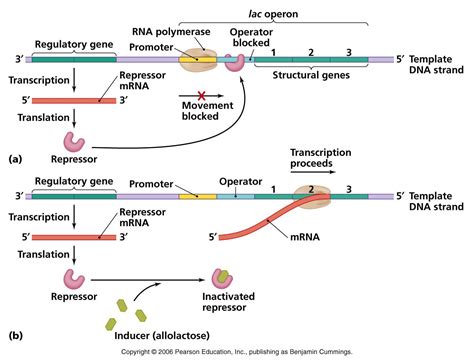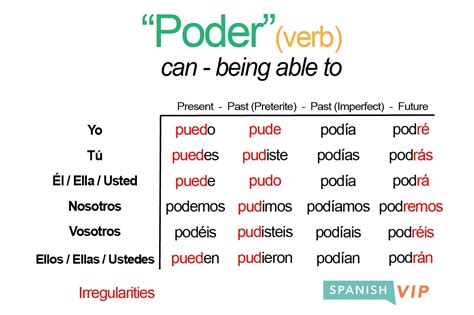The lac operon is a genetic regulatory system that controls the metabolism of lactose in Escherichia coli (E. coli) bacteria. The lac operon diagram is a visual representation of the genetic components and their interactions, which work together to regulate the expression of genes involved in lactose metabolism. In this article, we will delve into the details of the lac operon diagram, exploring its components, mechanisms, and significance in understanding gene regulation.
Key Points
- The lac operon is a genetic regulatory system that controls lactose metabolism in E. coli bacteria.
- The lac operon diagram consists of a promoter, operator, and three structural genes: lacZ, lacY, and lacA.
- The lac repressor protein binds to the operator, preventing RNA polymerase from transcribing the structural genes.
- The presence of lactose or allolactose induces the lac operon by binding to the lac repressor protein, causing it to release from the operator.
- The lac operon is a paradigm for understanding gene regulation, with applications in fields such as biotechnology and synthetic biology.
Components of the Lac Operon Diagram

The lac operon diagram consists of several key components, including the promoter, operator, and three structural genes: lacZ, lacY, and lacA. The promoter is the region where RNA polymerase binds to initiate transcription, while the operator is the binding site for the lac repressor protein. The lacZ gene encodes for beta-galactosidase, an enzyme that breaks down lactose into glucose and galactose. The lacY gene encodes for lactose permease, a protein that transports lactose into the cell. The lacA gene encodes for thiogalactoside transacetylase, an enzyme that acetylates thiogalactosides.
Regulation of the Lac Operon
The lac operon is regulated by a feedback mechanism that involves the lac repressor protein and the presence of lactose or allolactose. In the absence of lactose, the lac repressor protein binds to the operator, preventing RNA polymerase from transcribing the structural genes. This results in the repression of lactose metabolism. However, when lactose or allolactose is present, it binds to the lac repressor protein, causing it to release from the operator. This allows RNA polymerase to transcribe the structural genes, resulting in the expression of lactose-metabolizing enzymes.
| Gene | Function |
|---|---|
| lacZ | Beta-galactosidase |
| lacY | Lactose permease |
| lacA | Thiogalactoside transacetylase |

Mechanisms of Lac Operon Regulation

The lac operon is regulated by a combination of mechanisms, including repression, induction, and attenuation. Repression occurs when the lac repressor protein binds to the operator, preventing RNA polymerase from transcribing the structural genes. Induction occurs when lactose or allolactose binds to the lac repressor protein, causing it to release from the operator. Attenuation occurs when the transcription of the structural genes is terminated prematurely, resulting in the reduction of lactose-metabolizing enzymes.
Applications of the Lac Operon
The lac operon has numerous applications in fields such as biotechnology and synthetic biology. The lac operon is used as a model system to study gene regulation and to develop new biotechnological products. For example, the lac operon is used to produce recombinant proteins, such as insulin and human growth hormone. The lac operon is also used to develop new biosensors and biocatalysts.
What is the function of the lac repressor protein?
+The lac repressor protein binds to the operator, preventing RNA polymerase from transcribing the structural genes. This results in the repression of lactose metabolism.
What is the effect of lactose on the lac operon?
+The presence of lactose or allolactose induces the lac operon by binding to the lac repressor protein, causing it to release from the operator. This allows RNA polymerase to transcribe the structural genes, resulting in the expression of lactose-metabolizing enzymes.
What are the applications of the lac operon?
+The lac operon has numerous applications in fields such as biotechnology and synthetic biology. The lac operon is used as a model system to study gene regulation and to develop new biotechnological products, such as recombinant proteins, biosensors, and biocatalysts.
In conclusion, the lac operon diagram is a powerful tool for understanding the genetic regulatory system that controls lactose metabolism in E. coli bacteria. The lac operon is a paradigm for understanding gene regulation, with applications in fields such as biotechnology and synthetic biology. By studying the lac operon, researchers can gain insights into the complex mechanisms of gene regulation and develop new biotechnological products.


